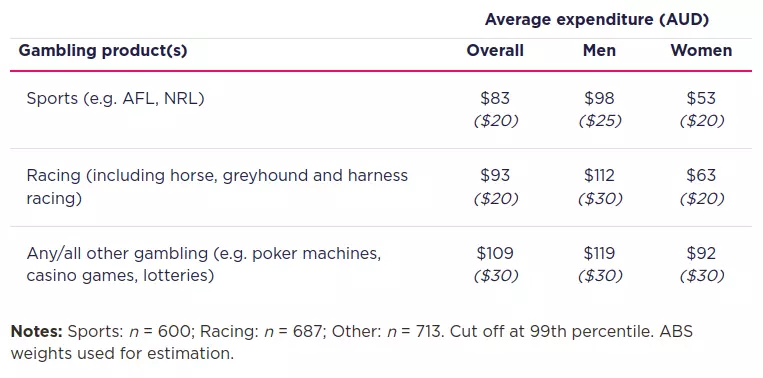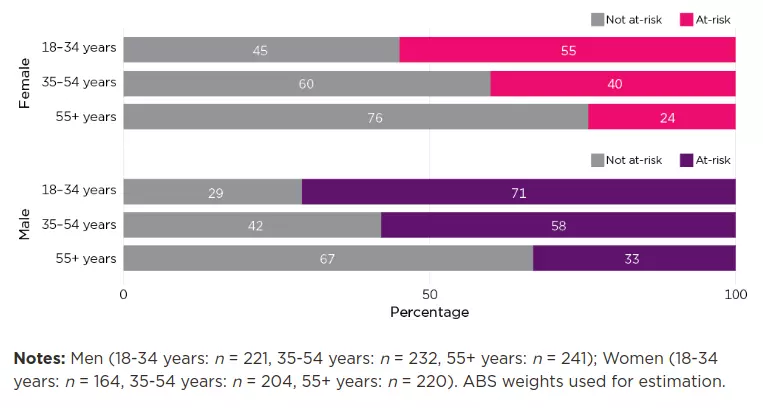 Earlier this week, the Australian Gambling Research Centre (AGRC) released the results of a study claiming that almost half of Australians who gamble (46%) are at some risk of experiencing gambling-related harm.
Earlier this week, the Australian Gambling Research Centre (AGRC) released the results of a study claiming that almost half of Australians who gamble (46%) are at some risk of experiencing gambling-related harm.
The AGRC placed the issue of gambling harm prevalence in the context of the ongoing debate regarding the increasing gambling advertising rates on a global scale. The trend seems to be valid in Australia, too, with Victoria Responsible Gambling Foundation (VRGF) reporting that national spending on gambling advertising rose from AU$15.9 million spent by the local gambling industry in 2020 to AU$287.2 million in 2021.
According to the results of the study, researchers, service providers, policy makers, and the broader community in Australia have raised concerns regarding the proliferation of gambling advertising in the country and its potentially negative impact on local people’s gambling behaviour. The research into gambling advertising was then held among Australian adults to provide a better understanding of how exposure to advertising affects people’s behaviour and their views on potential policy responses.
Australians’ Levels of Participation on the Rise, Lotteries Recognised as the Most Preferred Form of Gambling
 The research showed that different rates of gambling participation were reported by different demographic groups across the country.
The research showed that different rates of gambling participation were reported by different demographic groups across the country.
According to the results of the study, there were a number of factors associated with higher rates of participation in sports, racing and poker machines – being male, younger age (between 18 and 34), being employed, and living with dependent children. Also, more men than women were found to have spent money on every type of gambling product available in the survey, including keno, lotteries, and casino table games.
The Australian Gambling Research Centre’s study found that around two in five adult residents of the country (or about 38%) gambled no less than once every week, with the activity usually differing by gender (48% for men and 28% for women). The average expenditure in a typical gaming session among Australian gamblers was pretty much similar for betting on sports, races, and other gambling products, with men normally spending more money than women on all verticals.

Image credit: Australian Institute of Family Studies (AIFS)
The aforementioned survey revealed that the majority of Australian adults (73%) gambled at least once over the past 12 months. Lotteries and scratch cards (also known as scratchies) were the gambling activity with the highest participation rates (64%), followed by betting on different types of races (39%) – greyhound, horse, and harness racing – as well as betting on sports (34%) and poker machines, or so-called pokies (33%).
The average number of products Australians gambled on over the past 12 months was two, but almost a quarter of the survey respondents (23%) revealed that they gambled on six or more different products.
Researchers have noted that almost half of the local adults (44%) reported betting on sports and/or racing over the past year. The ones who placed bets on sports events gambled on an average of 2.4 different sports, with the Australian Football League (ALF) being the most common (42%), followed by the National Rugby League (NRL) (32%) and football (26%). The survey respondents revealed that they placed the majority of their wagers on sports and races online via a computer (22%) or a smartphone (42%).
Rates of Gambling-Related Harm on the Rise among Younger People Regardless of Their Gender
 As mentioned above, the latest research showed that 46% of the Australian adults who gambled were classified as being at some risk of Gambling harm in the past 12 months, with the degrees of harm severity varying.
As mentioned above, the latest research showed that 46% of the Australian adults who gambled were classified as being at some risk of Gambling harm in the past 12 months, with the degrees of harm severity varying.
The Australian Gambling Research Centre revealed that a larger number of men who gambled were considered at risk of being affected by gambling-related harm than women, while the proportion of the risk was reduced with age for both male and female gamblers. Young adults in the 18 to 34 age group were more than twice as likely to experience gambling-related harm in comparison to the 55+ age group.
Researchers found that approximately two-thirds of all individuals who took part in the study gambled on sports (67%), poker machines (67%), and racing (63%) were considered at risk of gambling-related harm. The proportion was higher among individuals who placed bets every week or more often, with the rates rising to 83% for poker machines, and 74% for betting on races and sports.

Image credit: Australian Institute of Family Studies (AIFS)
As revealed by the research, most Australian adults said that gambling is too prevalent in the country. The majority of the survey respondents agreed that, for the time being, there were too many opportunities for gambling and gambling should be discouraged. The people who took part in the survey seem to be divided on whether the Federal Government should fully ban gambling, with 47% of them still agreeing that Australian residents should be given the right to gamble whenever they want. A relatively low number of respondents – about 17% – agreed that gambling is good for society when on balance.
- Author


